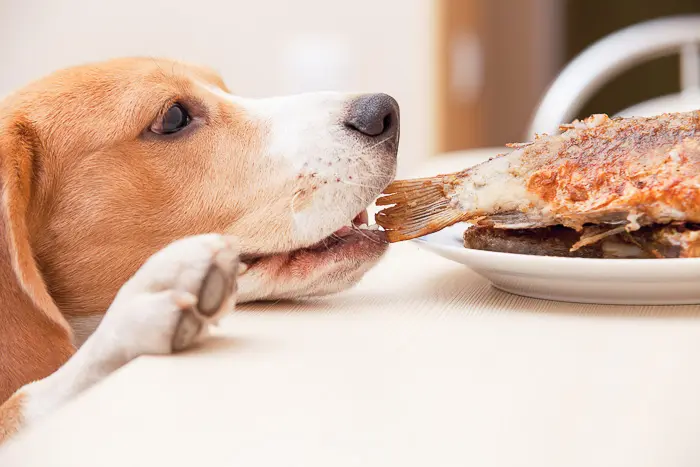Is fried shrimp safe for dogs? There are a few things you need to know. Raw shrimp can cause gastrointestinal upset and anaphylactic shock. Fried shrimp can cause gastrointestinal upset as well. To ensure your dog’s safety, cook shrimp for them only after removing the veins. Steamed shrimp is a healthier choice for your dog. And remember: steamed shrimp is less salty and has fewer toxins.
Also Read: can dogs eat bean sprouts
Raw shrimp can cause anaphylactic shock
While some dogs may have allergies to shrimp, other dogs may not. However, dogs can develop food allergies if they have a genetic predisposition to it. Studies show that foods cause about 10 percent of all canine allergies. As such, it is best to avoid giving shrimp to dogs that have known food allergies or sensitivities. To minimize your dog’s risk of developing an allergic reaction to shrimp, prepare it in smaller portions, and avoid giving it to him or her as a treat.
Although shrimp can be beneficial for your dog, it can also cause severe side effects. While it’s full of protein, it is high in fat. Shrimp can lead to problems in your dog’s digestive tract, resulting in a painful and debilitating allergic reaction. In addition, raw shrimp can also be toxic to dogs. If you’re worried about giving shrimp to your dog, be sure to consult your vet.
If you do give your dog raw shrimp, be sure to remove the tails and shells. They can cause choking and can also irritate the upper gastrointestinal tract. Finally, shrimp contain high amounts of dietary fat, which can cause unwanted weight gain. If you’re worried about a possible allergic reaction, make sure to discuss any possible risk with your vet. In addition to avoiding anaphylactic shock, raw shrimp can also cause bacterial infections and salmonella. If you’re unsure whether your dog is allergic to shrimp, be sure to consult your vet before feeding it to him.
While raw shrimp is generally safe for dogs to eat, it is best to limit its intake to small amounts. Its fatty content, however, can upset your dog’s digestive system. It is best to avoid fried shrimp, as it can cause digestive upset. Even though shrimp is a good source of protein and vitamins, it is still best to avoid feeding your dog raw shrimp. Just make sure to cook the shrimp properly to avoid an allergic reaction.
Besides shrimp being high in protein, shrimp is also high in vitamins and minerals. It may improve enzyme function, boost your dog’s immune system, and help with digestive health. As an added bonus, shrimp contains vitamins, minerals, and antioxidants that can help your dog fight off environmental and seasonal allergens. In addition to protein, shrimp also contains high levels of iron, phosphorus, and vitamin B12.
fried shrimp can cause gastrointestinal upset
Fried shrimp is a common delicacy for many people but is not safe for dogs. High fat content can cause gastrointestinal upset and pancreatitis. Fried shrimp should be served without extra seasoning, oil, or butter. The fried shrimp is also contaminated with harmful bacteria and should not be given to dogs. The tail of the shrimp is also a danger because it may cause choking and gastrointestinal upset in dogs.
Raw shrimp is dangerous to dogs because it can cause a potentially deadly bacterial infection. Similarly, large amounts of raw shrimp can cause gastrointestinal upset. To avoid this, make sure to cook the shrimp before serving it to your dog. If possible, remove the shells before serving cooked shrimp. This will make it easier to remove the vein. Moreover, fried shrimp contains oil and grease, which is harmful for your dog. As such, it is best to limit the consumption of fried shrimp to a minimum.
Fried shrimp is also harmful for dogs because it contains too much salt. Shrimp that is deep-fried can have a higher sodium content, which can cause gastrointestinal upset in dogs. It is also important to remember that dogs should never eat the shells, tails, or heads of shrimp. They will not be able to digest them and may choke on them. If you do eat shrimp, make sure that you devein them and do not give them the tails.
However, fried shrimp is not an absolute danger for dogs. It can cause diarrhea, vomiting, and excessive flatulence. But if you happen to accidentally serve your dog fried shrimp, you should take him to the vet immediately. A proper diagnosis will help determine what is causing your dog’s condition and how to prevent it from becoming worse. If you have any doubts, consult your veterinarian as soon as possible.
If you must feed fried shrimp to your dog, make sure you boil it first. Shrimp is not suitable for dogs who have sensitive stomachs and are allergic to it. In addition to being a choking hazard, shrimp can also cause excessive weight gain. Therefore, be careful about the quantity you give your dog. It is safe to serve one or two shrimp per serving to small dogs. But make sure that you do not over-feed your dog.
steamed shrimp is a healthier option
As small as a shrimp is, it packs a nutritional punch. It’s packed with vitamins, minerals, and phosphorus, essential nutrients for healthy bones and a powerful metabolism. And dogs love the texture of shrimp – its meaty texture makes it a great training treat for them. Fried shrimp has high cholesterol, so frying shrimp may be too rich in calories and fat for dogs.
If your dog enjoys fried shrimp, don’t be afraid to introduce this treat into his or her menu occasionally. While dogs aren’t allergic to shrimp, they’re still sensitive to some other foods, including oils and butter. As a general rule, shrimp are safe to eat for dogs, as long as you remove the shells, devein them, and keep the internal temperature at 145 degrees Fahrenheit or higher.
However, some types of shrimp can cause tummy issues in dogs. Some of these reactions are life-threatening, and they often cause your dog to cough, wheeze, or swell their face. Even mild allergies can result in itchy, flaky skin and paws. Shrimp may also cause digestive issues, and too much can lead to vomiting and diarrhea.
Although fried shrimp is the most common way to feed your dog, it’s still important to remember that raw shrimp can be harmful for your dog’s health. If you’re unsure of whether shrimp is safe for your dog to eat, check with a veterinarian to ensure that it won’t cause harm. A fried shrimp may be poisonous, so be sure to cook it thoroughly before giving it to your dog.
Fried shrimp is also very high in calories. But if you can give your dog a small portion of cooked shrimp, it’s perfectly safe. Cooked shrimp will provide your dog with a flavorful treat without sacrificing its nutritional value. A small piece of cooked shrimp can also be sprinkled on their food as a flavor enhancer. Be sure to avoid spicy dishes.
removing the veins before cooking shrimp for your dog
Before cooking shrimp for your dog, you should make sure to remove the veins. Veins are long strings that are not present in every shrimp. You can remove these by using a paring knife and pulling up on the vein with the tip. While the vein is fairly elastic, it is best not to worry if it breaks as it will easily be picked up again. To avoid the risk of choking your dog on uncooked shrimp, be sure to peel the shrimp before feeding it to your pet.
To make sure that your dog is not allergic to shrimp, be sure to devein the shrimp before feeding it to your dog. The tails of shrimp are likely to cause irritation to the dog’s upper gastrointestinal tract and can aggravate an allergic reaction. Additionally, shrimp that are undercooked can cause bacterial infections and high cholesterol, which is bad for a dog’s cardiovascular and weight. To avoid these problems, always devein and peel the shrimp before feeding it to your dog. If you don’t feel comfortable deveining the shrimp, you can always take it to a fishmonger.
When cooking shrimp for your dog, you can remove the veins using a pair of kitchen tools. You’ll need a sharp knife and steady hands. The veins are visible on the back of the shrimp. The black line is the digestive tract of the shrimp. When you cook shrimp, the bacteria in this area will be destroyed. A healthy meal for your dog will include a variety of nutrients and fiber.
Before feeding shrimp to your dog, be sure to remove the shell and vein. This will make it easier to remove the vein. You can also use the shells for making a delicious seafood stock. Boiling the shrimp with vegetables makes a great stock and can be fed to your dog as a treat or as a flavour enhancer. If you’re worried about the health risks of shrimp, you can use the shells for stock.






